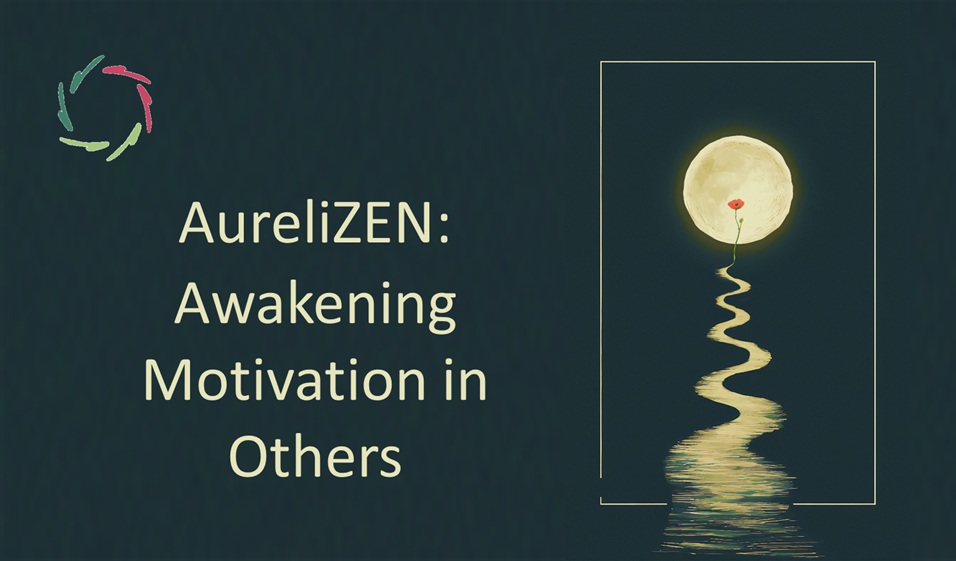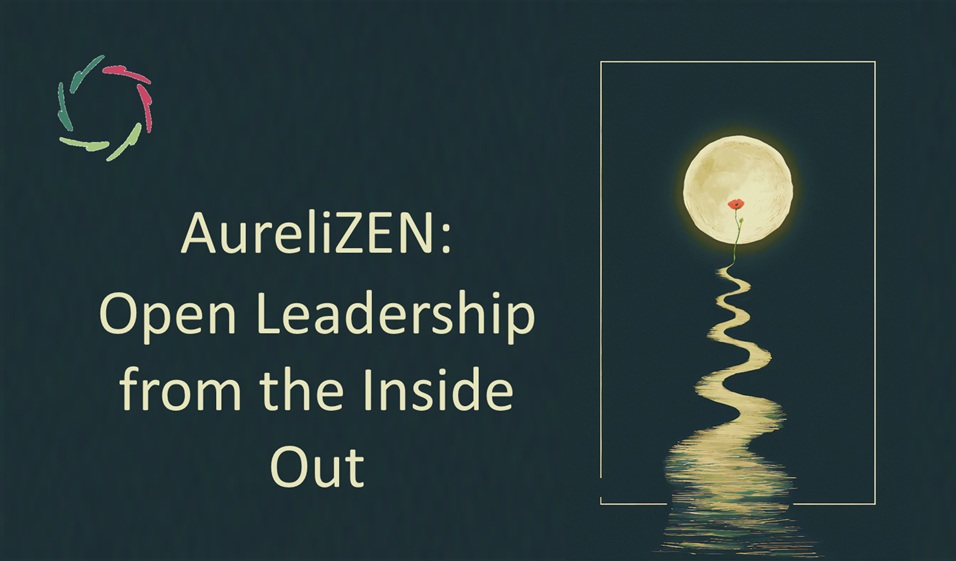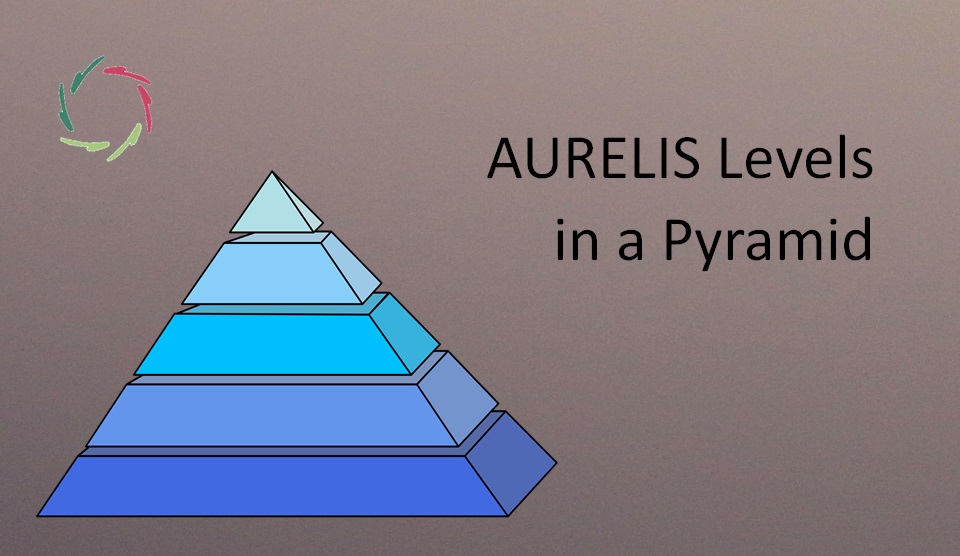AureliZEN: 3 – Awakening Motivation in Others

[For an introduction to the AureliZen series, goto AureliZEN: a Seminar Series for Deep Growth.]
Why ‘motivating others’ starts with you
Many leadership strategies focus on how to ‘get’ people to do things — looking for techniques, incentives, or persuasion tactics, assuming that the issue lies with the other person. But real motivation doesn’t work that way. You cannot force someone to be motivated any more than you can force a plant to grow. You can only create the right conditions.
This seminar turns the usual approach inside out. Instead of seeing motivation as something we do to others, we explore how it arises naturally from within them — and how we, in turn, can influence that process by the way we show up. The best way to awaken motivation in others is to authentically embody deep motivation ourselves.
The key is empathy, openness, and presence — not manipulation or pressure. This is closely related to deep autosuggestion, where lasting change happens not through force, but through gentle invitation.
The role of empathy in motivation
People feel most motivated when they feel deeply understood and respected. This is why the best motivators are not those who try to push or convince, but those who see the other person deeply and connect with their underlying energy.
A crucial distinction:
- Sympathy makes us emotionally entangled. It can lead to overwhelm, confusion, and even collective stress responses.
- Empathy provides clarity and strength. It allows us to step into someone’s world without losing ourselves, offering understanding without becoming consumed by their emotions.
Empathy is not just a concept. It is an experience. When people feel truly seen, something in them shifts. Their own motivation starts to emerge from within, because they feel recognized in their depth.
Motivation as an open, ongoing process
Motivation is not something that happens once and is then complete. It is a continuous flow that can be nurtured or blocked by the way we communicate.
In every interaction, we either:
- Increase someone’s motivation by engaging with them openly, with curiosity and respect.
- Diminish their motivation by making them feel unheard, judged, or controlled.
For example, in workplaces, motivation often fades not because of the work itself but because people don’t feel valued. The same happens in personal relationships. When we feel unseen, motivation naturally decreases.
This idea aligns with deep leadership principles, where true influence comes not from control, but from creating an environment where motivation can thrive naturally.
YogaZen practice: Opening up to others
[see: YogaZen How-to]
The physical experience reinforces mental openness, for example, in this practice:
Standing posture, arms moving in large circular motions.
This symbolizes opening oneself to others, energy, and deeper motivation. By experiencing physical openness, we invite a mindset of open communication.
Many people try to motivate through control, but control creates resistance. This practice helps us embody the opposite: trust, receptivity, and flow.
The power of shared motivation
Motivation is contagious. When people feel part of something meaningful, motivation expands without force.
Teams that share a deep sense of purpose tend to:
- Perform better with less external supervision.
- Experience less burnout and disengagement.
- Feel a natural drive toward their goals, rather than needing to be pushed.
This is why artificial ‘team-building events’ rarely work. They do not create a deep connection. The real key to shared motivation is genuine alignment with a meaningful goal.
This principle is known as empathy beyond — not just conceptual understanding, but feeling the deeper motivation of another as if it were your own.
YogaZen practice: partnered movement
One participant moves through a slow, mindful YogaZen exercise while another observes in silence.
- The observer is encouraged to watch without judgment, witnessing with deep attention.
- The person moving learns to experience being seen with openness rather than self-consciousness.
- This mirrors the dynamics of real motivation — when we feel deeply acknowledged, our energy naturally expands.
Lesson: Motivation flourishes when we feel truly recognized — not for what we should be, but for who we truly are.
The connection between motivation and self-efficacy
People feel most motivated when they feel capable and empowered. This is known as self-efficacy. The belief in one’s ability to succeed.
Leaders who inspire motivation:
- Trust people to take ownership of challenges.
- Avoid micromanagement, which kills intrinsic motivation.
- Show confidence in others, helping them believe in themselves.
Message: “I trust you” is one of the most powerful motivators. When people sense that their efforts matter, motivation flows without force.
YogaZen practice: Standing posture with deep grounding
- Participants stand, feeling their feet firmly rooted to the ground.
- With each breath, they visualize a deeper sense of inner stability and power.
- This reinforces the idea that real motivation is not external stimulation. It is internal confidence.
Lesson: When you feel deeply grounded, you naturally inspire the same stability in others.
Creating a workplace culture of deep motivation
Many organizations attempt to motivate employees through external incentives — bonuses, promotions, or performance reviews. However, deep motivation does not come from rewards. It comes from alignment with meaningful work.
A deeply motivating workplace:
- Prioritizes purpose — helping employees feel that their work has an impact.
- Supports autonomy — allowing individuals to take ownership of tasks.
- Encourages mastery — providing opportunities for growth and development.
When employees feel connected to something meaningful, motivation becomes self-sustaining. Leaders who understand this focus on support, not control.
Related topic: Inner alignment is key to both personal and professional fulfillment.
Invitation to explore motivation in others
Motivation is not about persuasion, manipulation, or control. It is about creating the right conditions for energy to flow naturally.
In this seminar, participants will:
- Experience the difference between forced motivation and real motivation.
- Learn how to communicate in ways that naturally awaken motivation in others.
- Explore the deep connection between self-motivation and motivating others.
Motivating others is not about ‘making them’ do something. It is about becoming the kind of person who awakens motivation simply by how they engage with the world.
Final reflection: What happens when you stop trying to motivate others — and instead, focus on being the kind of person who naturally awakens energy, purpose, and movement in those around you?
―
Addendum: Q&A about this module by Lisa
(Note that you can also ask Lisa questions about your personal situation.)
- Why does motivating others start with yourself?
Many people try to “get” others to be motivated, using persuasion, incentives, or pressure. But real motivation is not something you impose—it is something that arises naturally. You cannot force a plant to grow, but you can create the right conditions for it to flourish. The same is true for people. When you embody deep motivation yourself, it becomes contagious. People are inspired not by words alone but by presence. True leadership in motivation begins with living what you wish to awaken in others.
How does your own level of motivation affect those around you?
- What is the difference between empathy and sympathy in motivation?
Sympathy pulls us into someone’s emotions, making it easy to feel overwhelmed or drained. Empathy, on the other hand, allows us to step into another’s world while staying grounded in our own. When people feel deeply understood—without being judged or “fixed”—their own motivation begins to awaken. This is why the best motivators don’t push others but instead create space for them to reconnect with their own inner drive. Empathy fuels motivation by making people feel truly seen.
Can you recall a time when someone’s deep understanding made you feel more motivated?
- How does motivation function as an ongoing process?
Motivation is not a switch that can be flipped—it is a continuous flow that can be nurtured or blocked by the way we interact with others. Every conversation either strengthens or weakens someone’s motivation. In workplaces and relationships, motivation often fades not because of the task itself but because people feel unheard or undervalued. When we approach others with curiosity, respect, and openness, we allow motivation to remain alive and evolving.
How often do you check in on the motivation of those around you? Do you nurture or diminish it?
- Why is shared motivation more powerful than individual motivation?
Motivation spreads when people feel part of something meaningful. When individuals align with a shared purpose, motivation expands naturally, without external force. This is why artificial “team-building” activities often fail—they do not create a deep sense of connection. The real key to shared motivation is fostering an environment where people see their contribution as valuable and interconnected. When motivation is shared, the energy becomes self-sustaining, requiring less management and more trust.
Have you ever been part of a group where motivation felt effortless? What made it work?
- How does self-efficacy impact motivation?
People feel most motivated when they believe in their ability to succeed—this is known as self-efficacy. When people feel trusted and capable, they engage more deeply and take initiative. Micromanagement kills this motivation by creating dependence rather than confidence. Leaders who trust others and provide opportunities for growth naturally awaken motivation in those around them. A simple yet powerful message—“I trust you”—can unlock motivation more than any external reward.
When has someone’s trust in you increased your own motivation?
- Why is control the opposite of real motivation?
Many believe that to motivate others, they must control their actions. But control creates resistance. Motivation cannot be forced; it must be invited. When people feel pressured, their natural energy shuts down, leading to disengagement. The best way to awaken motivation is through openness, curiosity, and trust. When people feel free to explore their own motivation, they move forward not because they have to, but because they want to.
How would your approach to leadership change if you focused on trust instead of control?


